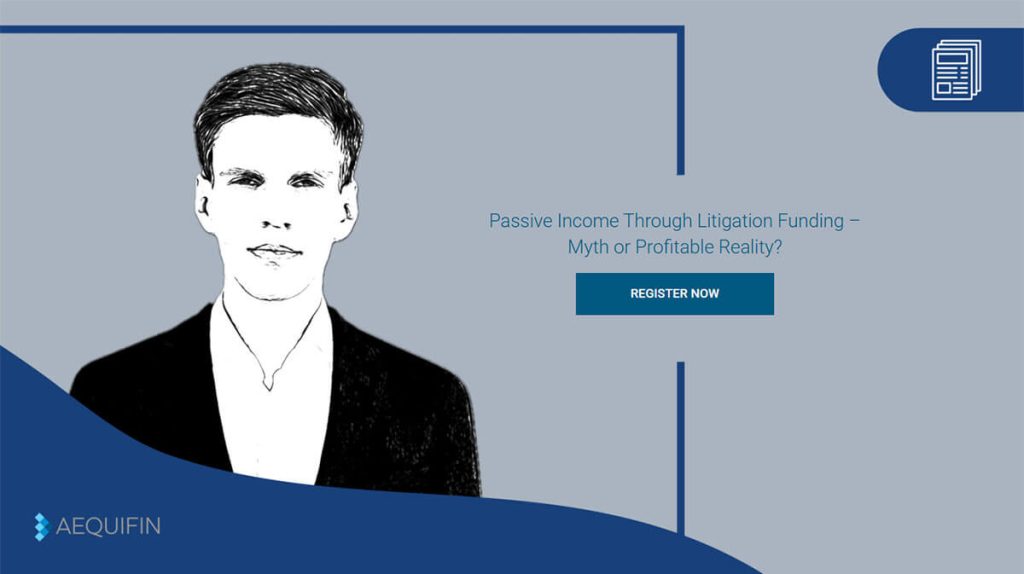In times of low interest rates and volatile markets, many investors are looking for alternative investments to the classic savings plan. While fund savings and ETFs have long been considered solid strategies, the returns often fall short of expectations. This effect is intensified when inflation and fees further reduce profits.
At the same time, an investment model that has so far been little known in Germany is gaining increasing importance. Litigation funding combines legal expertise with economic potential and gives investors the opportunity to participate in real legal cases with small amounts of capital, independent of stock markets and interest rate cycles.
The following comparison shows how savings plans and litigation funding work, what opportunities and risks they offer, and why litigation funding could become the most interesting alternative investment for many investors in 2025.
Savings Plan vs. Litigation Funding – How You Can Achieve High Returns with Small Amounts – At a Glance
- What is a savings plan and how does it work?
- What distinguishes litigation funding from classic investments?
- Can you invest small amounts in litigation funding?
- What kind of return is possible?
- How high is the risk?
- Why is litigation funding considered an alternative investment for 2025?
1. Savings Plan vs. Litigation Funding – What Lies Behind Both Concepts?
More and more investors are questioning whether traditional savings plans are still up to date. The combination of inflation, low interest rates, and stagnant markets means that even disciplined savers can hardly achieve real returns. At the same time, new forms of investment are emerging that go beyond conventional approaches. One such alternative is litigation funding.
What Is a Savings Plan?
A savings plan is a simple form of investment. Each month, a fixed amount is invested in funds, ETFs, or stocks. The advantage lies in the so-called cost-average effect. Those who invest regularly buy more shares when prices are low and automatically balance out fluctuations. Over many years, this can build wealth, even without a large starting capital.
However, the return is often limited. Even a well-performing fund usually yields around five to eight percent per year, falling short of many investors’ expectations. It quickly becomes clear that this approach requires a long-term strategy.
What Is Litigation Funding?
Litigation funding as an alternative investment works completely differently. Here, capital is provided to finance legal cases. Investors and in this case, sponsors or funders cover the costs of lawyers and court proceedings and receive a share of the awarded amount if the case is successful.
Litigation funding platforms make it possible to participate with relatively small amounts, opening this type of investment to private investors for the first time. The key advantage is that returns do not depend on stock markets or interest rates but on the actual outcomes of real court cases. The rise of this alternative investment form is therefore anything but coincidental.
Facts About Litigation Funding at a Glance
- The average success rate of funded cases is around 60%, according to studies.
- Potential returns can reach five to ten times the invested amount, depending on the case.
- Investments are largely uncorrelated with stock or real estate markets.
- Participation is possible starting from just a few hundred euros, depending on the platform.
IN JUST 5 MINUTES:
2. Why Do Traditional Savings Plans Reach Their Limits?
For a long time, savings plans were considered the epitome of solid investments. Regular deposits, predictable amounts, manageable riskand the principle has worked for decades. But it’s not just investors who are becoming more impatient. In times of persistently low interest rates and rising living costs, traditional models are increasingly reaching their limits.
Is a Savings Plan Still Worth It Considering Inflation?
Those who save today are losing real purchasing power. Even if fund or ETF savings plans grow nominally, inflation often eats up the profit.
Example
With an average return of 4% and an inflation rate of 3.5%, there is hardly any real gain left in the end, despite years of disciplined saving.
What Fluctuations and Fees Affect a Savings Plan?
While funds and ETFs offer opportunities for long-term growth, they are more vulnerable to market fluctuations. Especially in crisis years, the value of a portfolio can drop significantly in the short term. The most well-known examples include the DotCom bubble and the COVID-19 crisis. In addition, ongoing management and depot fees further reduce returns.
How High Are Returns on Savings Plans – and Are They Still Worth It?
Many investors prefer security, but they pay for it with lower returns. A savings account with 1% interest may feel reassuring but actually results in real losses as prices rise. Even conservative ETF savings plans achieve significantly less than 10% per year on average, with a long investment horizon of ten to twenty years.
Those who rely exclusively on traditional savings plans may preserve the value of their money but rarely increase it. This is exactly where litigation funding opens the door to an alternative investment that goes beyond traditional return limits.
3. Litigation Funding as an Alternative – How You Can Think Big with Small Investments
While traditional savings plans aim for long-term but mostly moderate returns, litigation funding offers a completely different return profile. It combines economic opportunity with social impact and gives investors the chance to actively participate in the pursuit of justice while profiting in case of success.
How Does the Litigation Funding Model Work in Practice?
Litigation funding follows a simple principle. Investors provide capital that is used to cover legal and court costs. If the case is won, they receive a share of the awarded amount. If the plaintiff loses, investors bear the risk of a total loss.
Platforms like AEQUIFIN create transparency and structure in this process. Each case is legally and financially reviewed in advance. Investors can choose which cases to support and how much capital to invest. This creates a model that is both accessible and manageable, even for private investors with moderate capital.
What Is an Example of Returns in Litigation Funding?
An investor contributes €100 to a legal case. If the case is won, depending on the share and the amount in dispute, a return between €600 and €1,000 could be possible. Although a loss is not excluded in the event of failure, participating in multiple cases can significantly reduce overall risk very much like diversification in savings plans or stocks. Litigation funding thus provides access to an alternative investment that is not only profit-oriented but also ethical and socially meaningful.
What Are the Advantages of Litigation Funding for Investors?
- Successful cases can yield many times the initial investment
- Performance is independent of interest rates or stock markets
- Investors gain insight into opportunities, risks, and costs
- Participation in multiple cases reduces volatility
- Funded cases help deliver justice
4. Risk and Return Compared – Savings Plan or Litigation Funding?
Every investment operates within the tension between security and return. While savings plans offer stability and predictability, litigation funding opens up opportunities for above-average profits. The key lies in understanding both models and making a conscious decision about how much risk you are personally willing to take.
What Is the Difference Between a Savings Plan and Litigation Funding?
Table
5.Why Is AEQUIFIN So Attractive for Private Investors?
Through AEQUIFIN as a platform for litigation funding, access to the litigation finance market is now open to private investors for the first time. Via the platform, you can participate in verified legal cases with small amounts of capital while benefiting from full transparency, digital processes, and without needing any prior legal knowledge.
- Entry possible from low investment amounts
- All cases are legally and economically reviewed in advance
- Independent of interest rates and market developments
- High transparency regarding opportunities, risks, and participation rates
- Social value through the promotion of justice and fairness
→ Register now and discover how you can invest your capital meaningfully with AEQUIFIN.














